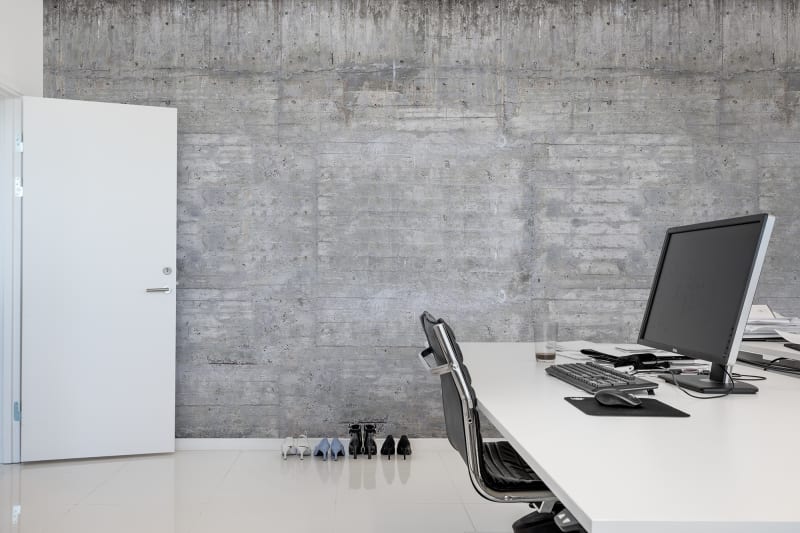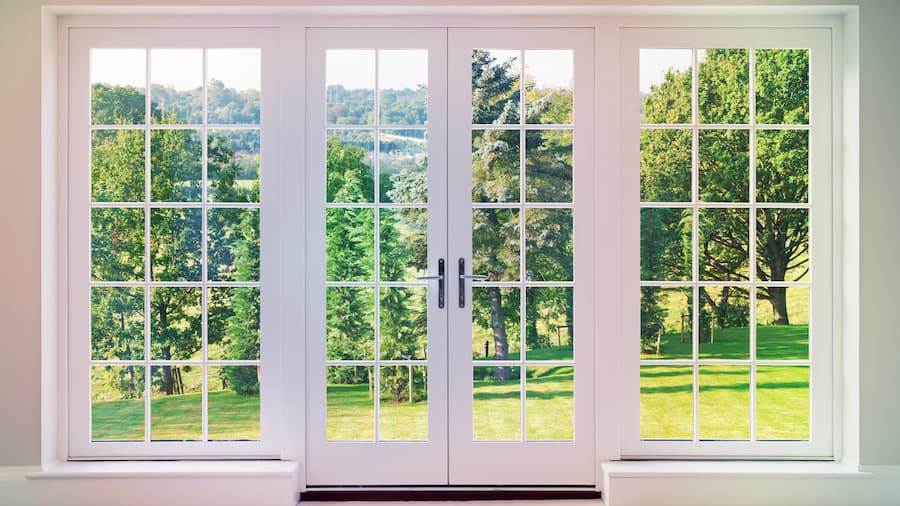Soundproof Paint: Does It Work?
Soundproof paint is a subject that people are often asking about more and more these days. Is it true that soundproof paint really works? Or at the very least, could it help you with soundproofing a wall or ceiling in your home?
Outside noise, whether we live in a house or an apartment in the city, may be a very irritating condition that has a significant impact on the quality of our daily lives and night sleep. For years, soundproofing your home has been the most popular option for coping with outside noise.

It can work in some instances, no matter how odd it sounds. For example, if the noise from the other room isn’t particularly loud, why spend money on foam panels, blankets, and drapes when a basic soundproofing paint would suffice? Does soundproof paint actually work? Is it a short-term fix that isn’t worth your money? Let’s take a closer look at this soundproofing material.
What Is A Soundproof Paint?
If you want to lessen the quantity of noise pollution that enters your home, soundproof paint, also known as acoustic paint, is an excellent option. This kind of paint is a viscoelastic water-based compound that may reduce vibrations and sounds.
Soundproof paint is non-hazardous (MSDS Sheets) and may be used both outside and indoors. All you have to do is spray, roll, or trowel it on surfaces around your house, like the ceiling and walls. After drying, a protective layer is formed on the surfaces that is both UV and water resistant, as well as having a low combustibility. They are also environmentally safe, easy to apply, and effective in reducing noise levels (read more about soundproof paint on soundproofadvice.com).
What Is the Composition of Soundproof Paint?
Because it is a very water-based and heavy-bodied paint with a mix of ceramic microspheres and sound-absorbing fillers, soundproof paint is significantly thicker than conventional wall paints. Thermacels, which are small vacuum-sealed cells filled with soft pigment, are used as sound-absorbing fillers.
What Is the Difference Between Soundproof Paint and Regular Paint?
Many people are confused by the differences between ordinary paint and soundproof paint. It’s natural to be concerned about the quality of acoustic paint since we’re concerned about possible harmful chemical emissions into our house.
With this in mind, we must also be aware that the majority of soundproof paints on the market today are composed of vinyl acrylic, often known as Latex. These materials containing polymer chains function as binders to the paint’s water-based surface.
Acoustic paint is differentiated from regular paints by its insulating characteristics. The vinyl acrylic material is designed to offer acoustic and thermal insulation on the surfaces on which it is applied.
Acoustic paint contains soundproofing additives that significantly improve the paint’s noise absorption capabilities. Ceramic microspheres are the most common name for these fillers.
Regular paint contains irregular fillers that, in the majority of cases, do not mix effectively. Those fillers typically create huge gaps in ordinary paint, preventing it from producing a firm, noise-absorbing covering.
Ceramic spheres embedded in sound-dampening paint, on the other hand, improve consistency. The elimination of gaps also leads to improved insulation and noise reduction benefits, as well as a reduction in echo.
How Does Soundproof Paint Work?
Thermacels are what give soundproof paint its power. The soft pigment that is held inside the cells behaves similarly to a car’s suspension in that it wobbles when sound waves strike it, absorbing the energy and allowing considerably less sound energy to get through the walls. This helps to prevent sound from passing through a wall into your ears and reduces echo in a room.
Sound dampening paints generally claim to be able to attenuate mid-frequency noises by about 30%, such as conversational speaking. If your problem noise is little, such as road noise or a loud TV, acoustic paint may be sufficient; but, if your problem noise is significant, like road noise or a loud TV, acoustic paint is unlikely to make a noticeable impact. Thermacel-based paint also enhances the thermal insulation of your room.
Video: Soundproof Paint: Does it Really Work?
Where Can You Use Soundproof Paint?
While painting every room in your house won’t transform it into a soundproof haven, you may apply soundproof paint to specific areas in your house for particular situations.
| 1. Condo | If you are regularly awakened by noisy neighbors, music, or the television from your neighbor’s condo, adding soundproof paint to your condo’s bedroom will help you sleep through the night. If you’re worried about disturbing your neighbors’ sleep, soundproof paint in your condo can help restrict and absorb the sound of your neighbors’ conversations, TV, and music. Living in a condominium might be difficult if you can’t keep your noise in check, so, if you want to know How to Soundproof a Condo, click here. |
| 2. The Baby’s Room | If you have noisy guests coming over your house, soundproof paint for the baby’s room would be quite beneficial. The decibel of normal-level speech will be absorbed by this soundproof paint on the walls of the baby’s room, reducing the probability of the baby being awakened by casual conversation. |
| 3. Classrooms | We became a kid once and we know that kids are easily distracted. Perhaps distracted isn’t the right term. Maybe it’s obnoxious . It makes no difference whether it’s distracted or nosy. It’s difficult for students to concentrate when they can hear what’s going on in the next room via the walls. Soundproofing paint in the classroom would substantially minimize the talk of surrounding students and teachers. |
How to Put Soundproof Paint on a Wall?
To get the greatest effects, you’ll need high-quality soundproof paint in large quantities. To begin, acquire high-quality soundproof paint or a soundproof paint additive to mix into the paint you want to use. For the greatest effects, apply at least three layers of soundproof paint or a soundproof paint additive on your wall. Additionally, because soundproof paint is quite thick, you’ll have to abandon traditional painting techniques.
When painting a room, the visual look of the wall can usually tell you if it needs another coat of paint. There may be some ugly lines when the paint was applied, or there may be some leftover color below. When applying soundproof paint, you’ll want to toss this idea out the window because, believe us, the thickness of the paint will fool you into thinking the walls are adequately covered with only one layer.
Soundproofing Techniques to Combine It With
Sound insulated paint by itself won’t transform your noisy room into a quiet library, but when combined with other low-cost soundproofing techniques, you can get considerably better results. If you’re looking for acoustic paint, you’re probably looking for a low-cost alternative to tearing walls up and installing insulation, so here’s a few low-cost soundproofing options to consider in addition to paint:
| 1. Furniture arrangement | Sound is blocked by mass. It’s an indisputable fact of soundproofing (Come on, we always say this!). The acoustics of a room may be greatly improved by thinking intelligently about furniture arrangement. For example, place your bookcase against the problematic wall and make sure it’s totally filled. This will produce a mass barrier that will assist prevent any sounds that get past your wall. |
| 2. Weatherstripping | Weatherstripping won’t soundproof a wall, but it will seal gaps in your window and door frames, preventing airborne sound from entering the room. If you have an issue with road noise or noise from your corridor, weather stripping is one of the most cost-effective soundproofing solutions available. |
| 3. Wall panels | As previously said, increasing mass to your wall makes sound waves more difficult to get through. The denser your wall, the more power is required to pass through it. Cover your wall with panels before painting it. You may use inexpensive plasterboard panels or go all out and buy properly manufactured soundproofing panels. It doesn’t matter too much; the important thing is that you’re increasing the wall’s bulk. Adding panels to your wall may appear to be a difficult task, but it is very straightforward if you can locate your wall studs. Simply cut them to size, screw them into the wall, and then acoustic paint them (more info about wall panels on soundproofmaster.com). |
| 4. Curtains | Weatherstripping combined with a thick pair of curtains or noise reducing curtains can help minimize noise coming in through your window; the thicker and more layers the curtains have, the better, since this helps deaden sound waves. |
So, Does It Really Work?
If you’re willing to apply at least three layers of sound dampening paint, you can effectively tune out low-level background sounds. Due to the lack of considerable mass, it will never equal the efficacy of solutions such as acoustic wall panels, acoustical ceiling tiles, or other insulating materials. When compared to a wallboard, the soundproofing influence will be minor.
Paint will not make a significant difference if you have a major noise problem. But, if you combine it with wall panels, weatherstripping, and thick curtains, as well as strategically relocating your furniture to aid deaden noises coming through the wall, the total impact can be positive.
Finally, don’t anticipate miracles from soundproof paint; but, a few layers might be the difference between a quiet night’s sleep and your neighbor’s TV waking you up. If you’re a light sleeper who’s having trouble sleeping because of low-level noise, this might be a good option for you.



